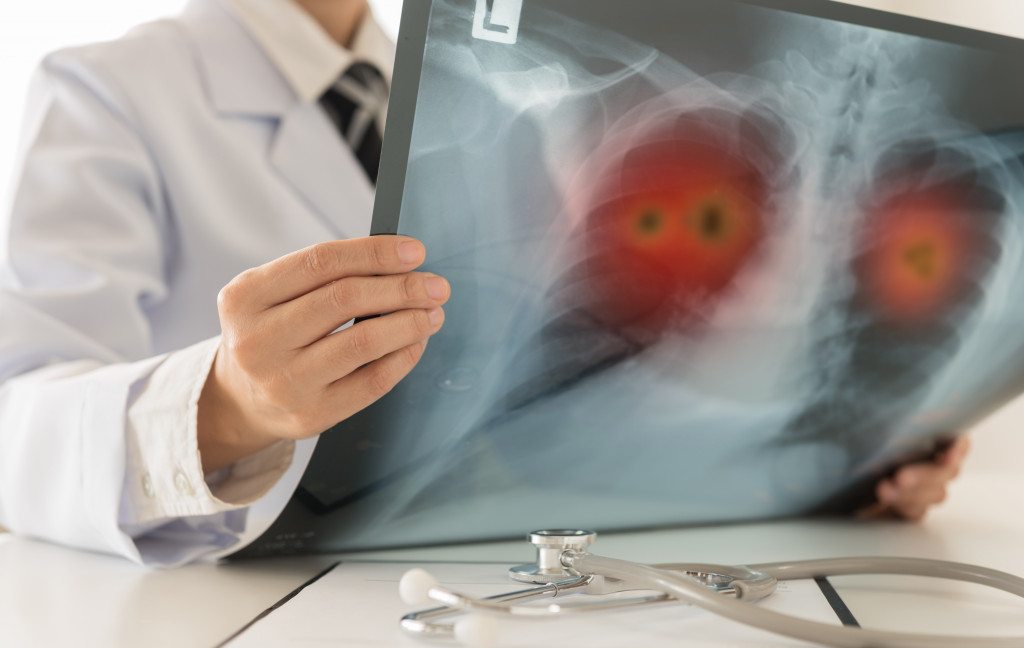- Don’t smoke or use tobacco products to reduce the risk of lung cancer.
- Avoid secondhand smoke by knowing where smoking is allowed, educating peers on health risks and asking for a smoke-free workplace.
- Eat a healthy diet to provide essential vitamins and minerals.
- Exercise regularly and aim for 30 minutes or more of moderate-intensity activity on most days of the week.
- Utilize NSCLC research to play an important role in reducing lung cancer risk and helping others affected.
Lung cancer is a serious disease that can significantly impact your health and quality of life. Unfortunately, there is no guarantee that you can avoid lung cancer, but there are significant ways to lessen your chances of developing the disease. This guide will explore five ways to reduce your risk of lung cancer.
1. Don’t Smoke
The most effective way to reduce your risk of lung cancer is not to smoke or use tobacco products. Smoking is the leading cause of lung cancer, accounting for around 80 to 90% of all lung cancer cases. If you smoke, quitting is the ultimate decision for your health and well-being.
Many resources are available to help you quit smoking, including nicotine replacement therapy, counseling, and support groups. Speak to your doctor about quitting smoking and the best strategies for you. If you plan to attempt cold turkey quitting, write down your reasons for quitting and read them before every craving.
2. Avoid Secondhand Smoke

Secondhand smoke is also a significant risk factor for lung cancer. Even if you don’t smoke yourself, exposure to secondhand smoke can increase your risk of lung cancer. Avoid being around others smoking or in areas where smoking is allowed.
If you work in an environment where smoking is permitted, ask your employer to implement a smoke-free policy. By avoiding secondhand smoke, you can reduce your risk of lung cancer and protect your overall health.
Here’s how you can further avoid secondhand smoke:
Know Where You Can and Cannot Smoke
Avoid being around others smoking or in areas where smoking is allowed. Check your local laws to determine which places permit smoking, and avoid these areas if possible.
Educate Your Peers
If you know somebody who smokes, talk to them about the health risks of secondhand smoke and encourage them to quit. This can help keep you and those around you safe from lung cancer.
Ask for a Smoke-Free Workplace
If you work in an environment where smoking is permitted, ask your employer to implement a smoke-free policy. Many employers understand the importance of providing a safe workplace, so don’t be afraid to speak up.
Refrain from Smoking in Your Home
Even if you’re a smoker, avoiding smoking indoors is important, particularly near vulnerable family members such as young children and elderly people. If possible, move outside or to another designated area when you need to smoke.
Monitor Air Quality
If you live in an area with poor air quality due to secondhand smoke pollution, monitor the local air quality readings and take appropriate precautions when needed. For instance, try exercising outdoors during periods of low air quality or wear a mask for added protection against pollutants.
3. Eat a Healthy Diet

Eating a healthy diet can also help reduce your risk of lung cancer. A diet high in fruits, vegetables, and whole grains can provide your body with essential vitamins and minerals to help prevent cancer.
In addition, some studies have shown that consuming foods high in antioxidants, such as berries, leafy greens, and nuts, can help reduce cancer risk. By making healthy dietary choices, you can reduce your risk of lung cancer and improve your overall health.
4. Exercise Regularly
Regular exercise can also help reduce your risk of lung cancer. Exercise can help improve your cardiovascular health, boost your immune system, and reduce inflammation. Studies have shown that individuals who exercise regularly have a lower risk of lung cancer than those who are inactive.
Regular exercise can reduce your risk of lung cancer and improve your overall health and well-being. Aim for 30 minutes or more of moderate-intensity exercise on most days of the week. This can include walking, jogging, biking, swimming, or various activities. If you haven’t been active in a while, start slowly and gradually increase your activity level over time. Talk to your doctor before beginning any new exercise program.
5. Utilize NSCLC Research
Utilizing research and clinical trials for Non-Small Cell Lung Cancer (NSCLC) is an important step in reducing the risk of lung cancer. Many advances have been made in understanding the causes of NSCLC and potential treatments and prevention methods.
As a participant in NSCLC research, you can help researchers better understand the disease and develop more effective treatments. By contributing to medical research, you can play an important role in reducing your risk of lung cancer and helping others affected by it.
In Closing
Lung cancer is a serious disease that can significantly impact your health and well-being. By not smoking, avoiding secondhand smoke, eating a healthy diet, exercising regularly, and utilizing NSCLC research, you can take proactive steps to reduce your risk of lung cancer and improve your overall health.

